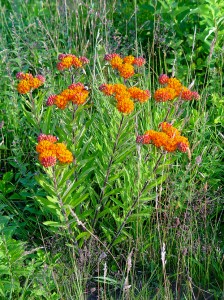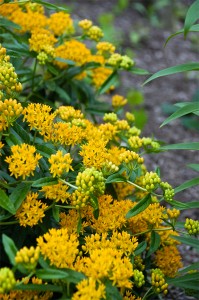We have much more to do and your continued support is needed now more than ever.
Why are Native Plants so Important?

I am often asked why native plants are becoming so popular, and why we’re reading and hearing so much about them these days. I think it’s part of a larger “green movement” that we’re experiencing in our country today. People are becoming more aware and better educated about our environment through organizations like the National Wildlife Federation.
There seems to be a sincere desire to live in such a way that our impact on the environment is lessened. Perceptions about nature and beauty are changing too. While a meadow or a woodland garden may once have been thought of as “messy,” natural landscapes are now valued for their biodiversity as well as their beauty.
Another reason that native plants are becoming so popular is that people are having real success growing natives, quite simply because they are easier to grow. They are already adapted to your soil and climate. They don’t need extra chemicals in the form of costly chemical fertilizers and pesticides to grow and thrive. And, once your new plants are established, their water needs are more in balance with what nature provides.
I enjoy working in the garden, but a little less work and a little more R&R doesn’t sound bad to me. More importantly, when my children or grandchildren play in the yard or eat food we grow there, I want to know it’s safe.
Speaking of children, who wouldn’t want theirs to discover the wonders of nature in their own back yards? Native plants provide food and shelter for the birds, butterflies and all the other creatures we cherish and delight in watching. Here is an example that everyone can identify with: the relationship between a Monarch butterfly and a milkweed plant.

Milkweed plants produce alkaloids that are toxic to many creatures. Monarch butterflies have evolved to have an immunity to the toxins and, in fact, by ingesting them are less delectable and better able to ward off bird predation. The relationship is so interconnected that Monarchs can only feed on milkweed. Please, think about it for one minute: no milkweed, no more Monarchs. That is not an unusual story in the world of plants and animals.

I really want to be clear, I’m not advocating that you tear your garden apart and swear off non-native plants forever and neither is anyone at American Beauties. I’m just hoping that you’ll make a start, and begin to incorporate more native plants into your garden. Maybe you could start with some milkweed. I think you’ll be happy you did. When you buy American Beauties Native Plants a portion of the proceeds go to our partner, the National Wildlife Federation.
 Peggy Anne Montgomery runs her own business as a horticultural consultant. She is proud to represent American Beauties Native Plants as their Brand Manager. As a long-standing member of the Garden Writers Association, she has written for numerous trade and popular publications such as Better Homes & Gardens, American Nurseryman and Organic Gardening. Peggy Anne has a background in native plant research, public relations with a large wholesale nursery, and she has owned her own business as a landscape designer in the Netherlands. In her free time she is an avid home gardener as well.
Peggy Anne Montgomery runs her own business as a horticultural consultant. She is proud to represent American Beauties Native Plants as their Brand Manager. As a long-standing member of the Garden Writers Association, she has written for numerous trade and popular publications such as Better Homes & Gardens, American Nurseryman and Organic Gardening. Peggy Anne has a background in native plant research, public relations with a large wholesale nursery, and she has owned her own business as a landscape designer in the Netherlands. In her free time she is an avid home gardener as well.





















